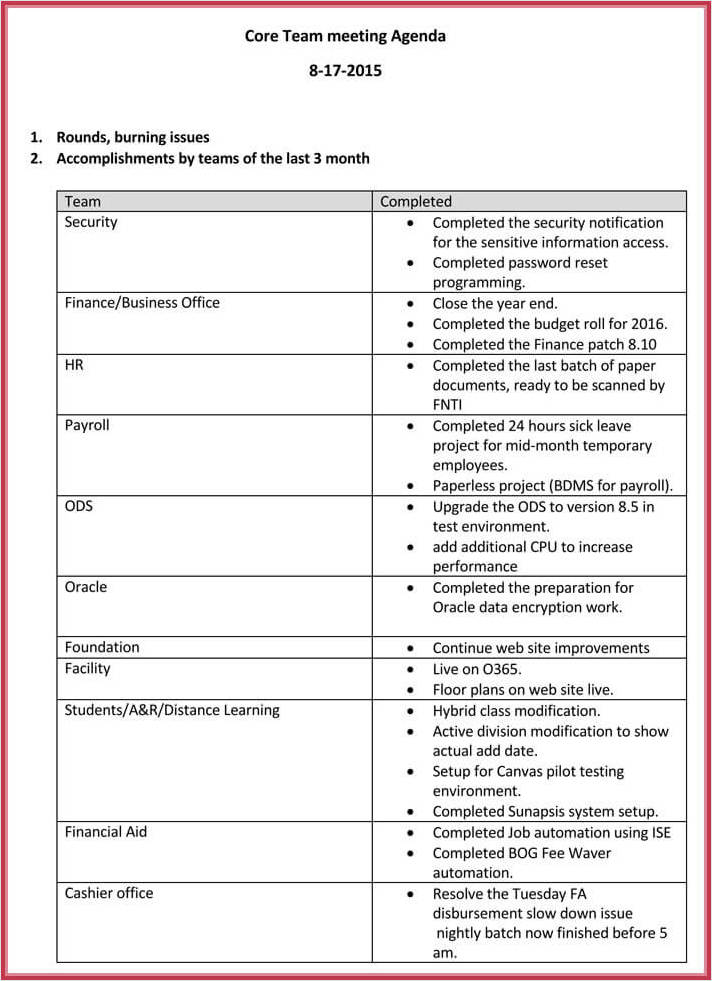A team meeting agenda is a document that outlines the topics, goals, and activities to be covered during a team meeting. It serves as a roadmap for the meeting, ensuring that everyone is on the same page and that the meeting stays focused and productive. A well-planned agenda can help improve communication, increase efficiency, and drive better decision-making within a team.
When creating a team meeting agenda, it is important to consider the specific needs and objectives of your team. Every team is unique, and the agenda should reflect the goals and priorities of the group. By tailoring the agenda to the specific needs of your team, you can ensure that the meeting is relevant and valuable for everyone involved.
Why Should You Use a Team Meeting Agenda?
Using a team meeting agenda offers several benefits for both the team members and the team leader:
- Organization: An agenda helps keep the meeting organized and ensures that all important topics are covered.
- Time Management: By setting specific timeframes for each agenda item, you can ensure that the meeting stays on track and doesn’t run overtime.
- Preparation: Sharing the agenda with team members before the meeting allows them to prepare and contribute to the discussion more effectively.
- Focus: An agenda helps keep the meeting focused on the key objectives and prevents it from getting derailed by unrelated topics.
- Accountability: By assigning action items and deadlines during the meeting, the agenda promotes accountability and ensures that tasks are completed.
How to Create a Team Meeting Agenda
Creating an effective team meeting agenda involves several key steps:
1. Identify the Meeting Objectives
Before creating the agenda, it is important to clarify the purpose of the meeting. What do you hope to achieve? What are the key objectives? By clearly defining the meeting goals, you can structure the agenda to address these objectives.
2. Determine the Agenda Structure
Decide on the structure of your agenda. This may include time allocations for each agenda item, as well as any recurring sections such as team updates or action item reviews. Consider the flow of the meeting and how each agenda item relates to the overall objectives.
3. Prioritize Agenda Items
Not all agenda items are created equal. Prioritize the items based on their importance and relevance to the meeting objectives. This will help ensure that the most critical topics are addressed first and that there is enough time allocated for each item.
4. Provide Background Information
Include any necessary background information or context for each agenda item. This will help team members come prepared and understand the purpose and scope of each topic.
5. Assign Responsibility
Assign responsibility for each agenda item to specific team members. This promotes ownership and engagement, as well as ensures that all necessary perspectives are represented during the discussion.
6. Share the Agenda in Advance
Distribute the agenda to team members in advance of the meeting. This gives them time to review the topics, gather any necessary information, and come prepared to contribute to the discussion.
7. Review and Revise
Regularly review and revise your team meeting agenda to ensure that it remains relevant and effective. Solicit feedback from team members and make adjustments as needed to improve the meeting experience.
Sample Team Meeting Agenda
Here is an example of a team meeting agenda:
1. Team Updates (10 minutes)
In this section, each team member provides a brief update on the progress of their projects or any challenges they are facing. This promotes transparency and fosters collaboration within the team.
2. Discussion Topic: Project X (30 minutes)
Discuss the current status of Project X, including any updates or roadblocks. Identify any necessary actions or decisions to be made.
3. Guest Speaker: Marketing Strategy (45 minutes)
Invite a guest speaker from the marketing department to share insights and best practices related to the team’s current marketing strategy. Allow time for questions and discussion.
4. Action Item Review (15 minutes)
Review the action items from the previous meeting and discuss progress, challenges, and next steps for each item.
5. Brainstorming Session: New Ideas (30 minutes)
Facilitate a brainstorming session to generate new ideas and solutions for a specific challenge or opportunity the team is facing.
6. Open Floor (20 minutes)
Provide an opportunity for team members to raise any additional topics or concerns that were not included in the agenda. This promotes open communication and ensures that all voices are heard.
7. Wrap-up and Next Steps (10 minutes)
Summarize the key takeaways from the meeting and assign action items and deadlines for follow-up. Clarify the next meeting date and any other important information.
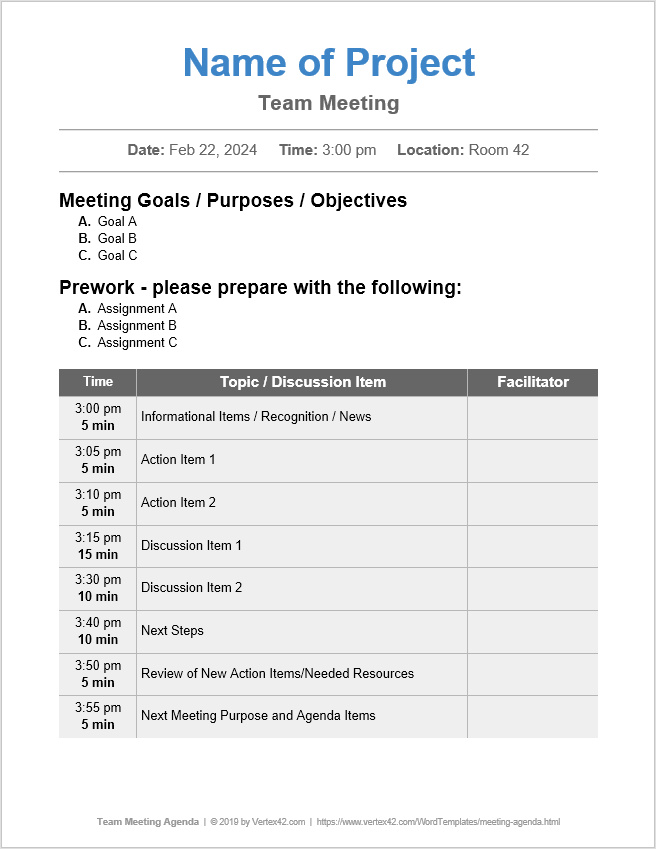
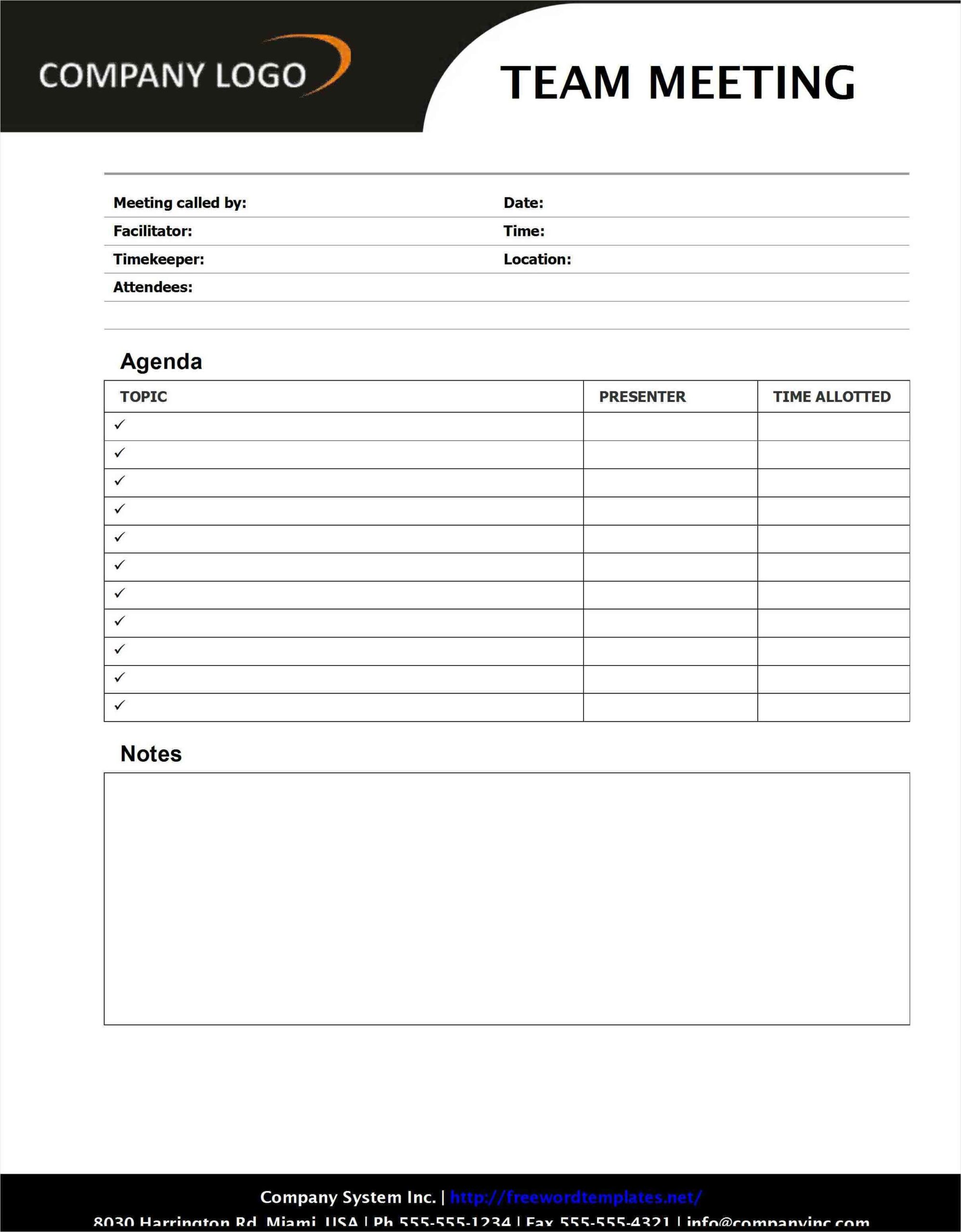
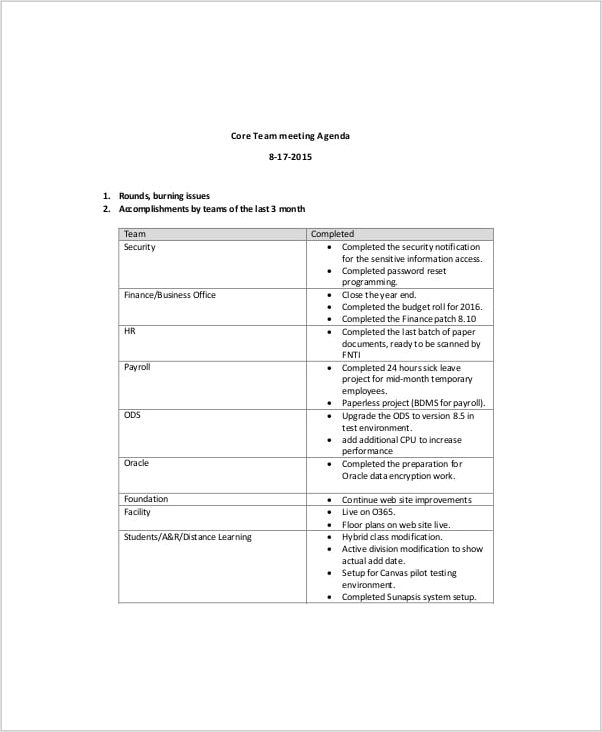
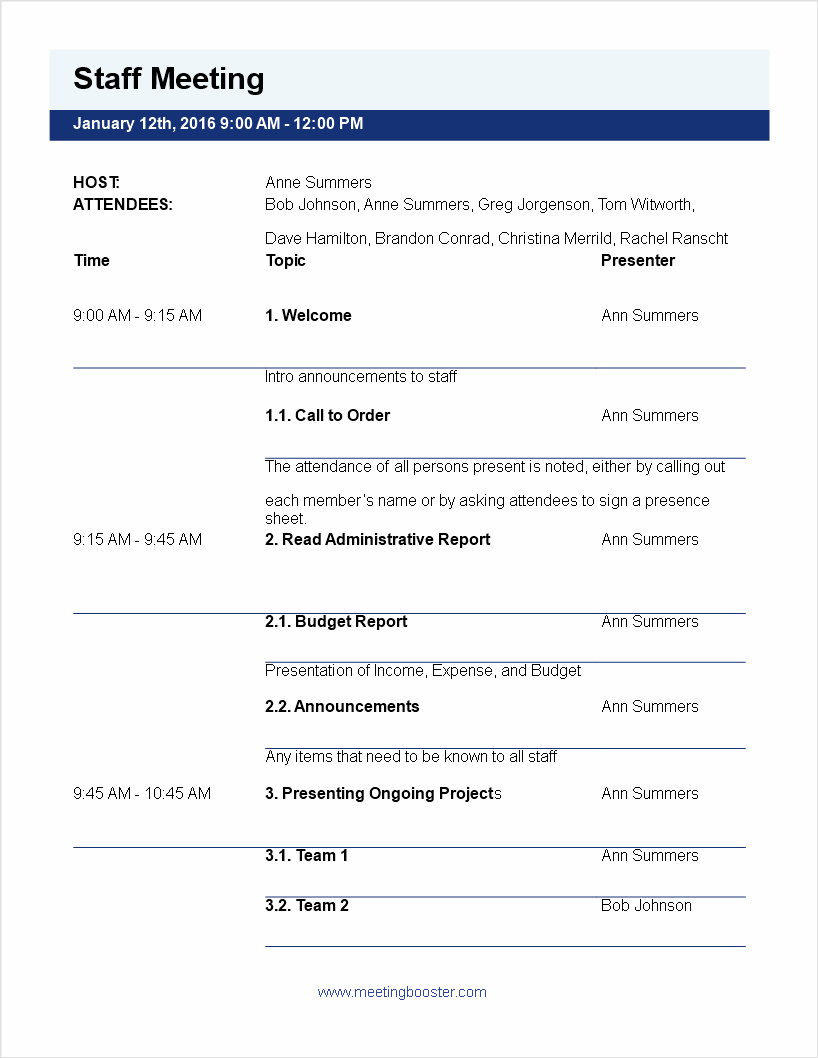
Conclusion
A well-planned team meeting agenda is a powerful tool for driving productivity and achieving team objectives. By following the steps outlined in this guide, you can create an agenda that keeps your team focused, engaged, and on track toward success.
Team Meeting Agenda Template Excel – Download
